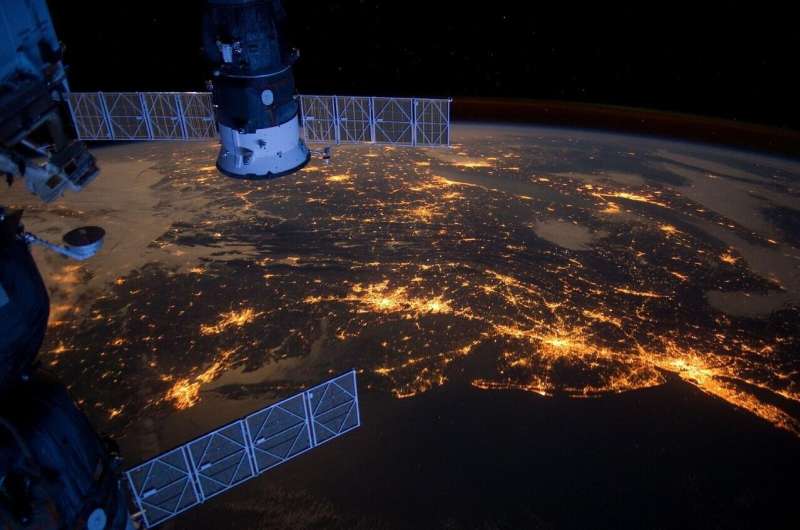How satellite images can help with environmental land management

Academics at the University of Surrey's Centre for Environment and Sustainability have undertaken research that proves Earth Observation satellite imagery can accurately assess the quality and quantity of some habitat types.
This discovery opens up cost-effective routes to monitoring, reporting, and verifying land management incentive schemes, such as the Department for Environment, Food and Rural Affairs' new Environmental Land Management scheme.
Environmental land management is a crucial element of adapting to protect communities and natural habitats—which is a goal of the upcoming UN Climate Change Conference in November.
In March 2021, the UK government announced the scheme as a replacement for the EU Common Agricultural Policy to support the rural economy while achieving the goals of the 25 Year Environment Plan and helping to meet carbon emission reduction commitments. The scheme will use public money to pay farmers and land managers in England to deliver a set of 'public goods' that cover clean air, clean and plentiful water, thriving plants and wildlife, protection from and mitigation of environmental hazards, beauty, heritage and engagement, and mitigation of and adaptation to climate change.
To confirm that their approach has practical application, the University of Surrey team worked with ecologists to test the use of satellite imagery in establishing habitat criteria for five example species or species groups in the Surrey Hills Area of Outstanding Natural Beauty, one of the areas in the first set of DEFRA's trials for the Environmental Land Management scheme. Two types of butterfly, skylarks, hazel dormice, and dragonflies and damselflies were chosen for investigation because they act as bio-indicators of appropriate and healthy habitat, both for themselves and in terms of the wider ecosystem. They also represent a range of habitat needs such as chalk grassland, woodland, pasture, arable land, hedgerows and inland water.
Ecologists from the Surrey Wildlife Trust and Butterfly Conservation advised the research team and helped them build knowledge of the habitat requirements for each species. The team then used both readily available and very high-resolution Earth Observation resources to evaluate broad habitat suitability and connectivity for the species and assign a suitability score. Finally, they used the score and local expert knowledge to explore the additional contribution of the increasingly available Very High Resolution (VHR) Earth Observation data (0.7–4 m in this study) for habitat assessment.
The team found that they could use Earth Observation data effectively to evaluate habitats, including through automatic recognition and mapping, which will be essential in running the government's new scheme. For example, they could check if skylark nesting sites were left uncut during the breeding season. They also identified ways of using the information from satellite images to identify simple ways to improve land management, for example, areas that could happily host butterfly populations if specific plant seeds were dispersed and areas where particular care against fertilizer spray drift is needed.
Professor Richard Murphy of the Centre for Environment and Sustainability and leader of the University's Space-4-Sustainability initiative under the Sustainability Research Theme, said that "our team and, in particular, the excellent work by NERC SCENARIO Surrey Ph.D. student Ana Andries have shown how it is possible to balance the level of detail available from satellite imagery with the level of scrutiny required for an accurate evaluation of habitat in sustainable land management. When coupled with expert knowledge of the habitat needs for specific species, Earth Observation data is really valuable, especially at Very High Resolution, or VHR. This technology has huge potential to enhance environmental protection and improvement, not only in the Surrey Hills but, with expert input, across England, the UK and globally."
The research was published in Sustainability.
More information: Ana Andries et al, Earth Observation for Monitoring, Reporting, and Verification within Environmental Land Management Policy, Sustainability (2021). DOI: 10.3390/su13169105
Provided by University of Surrey





















